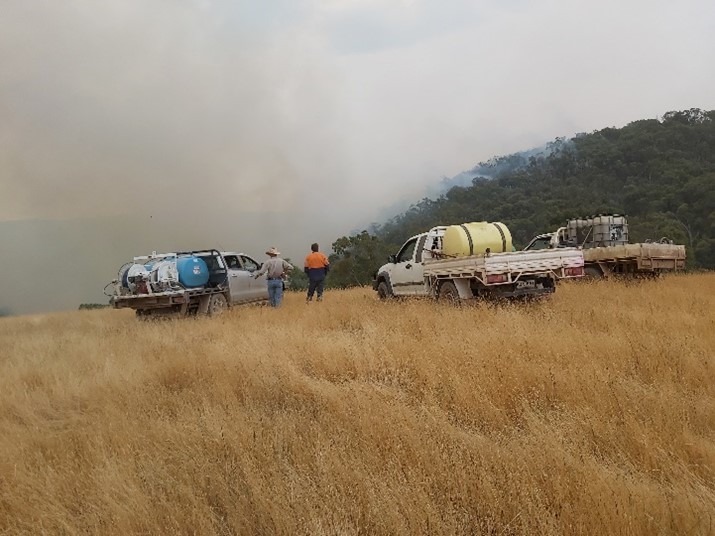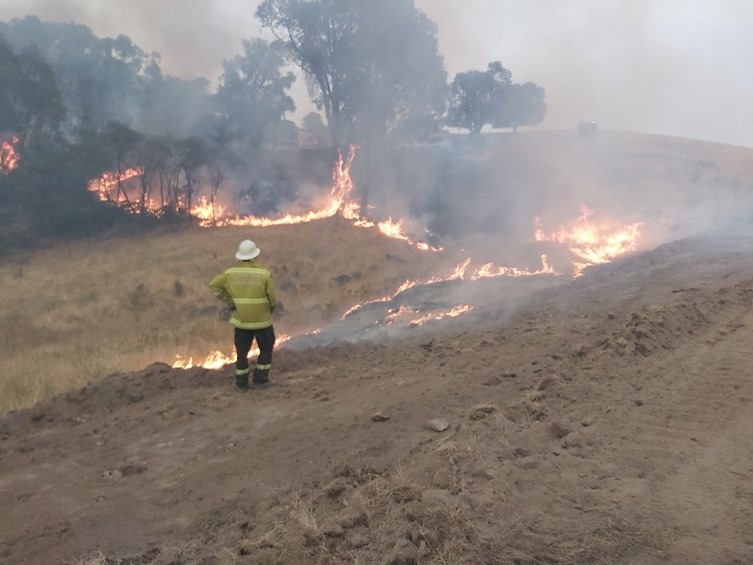Opinion Piece John O’Donnell 15 May 2024

Increasing cost of living and rising insurance costs for businesses and homeowners in Australia. It’s time for dramatically increased disaster mitigation action
Opinion Piece John O’Donnell 15 May 2024
Introduction
Increased costs of living are a very big issue across Australia and continues to increase for businesses and homeowners. The author has previously provided information in relation to this matter in the article linked below:
The above linked article considers:
- Increasing Living Cost Indexes (LCI) and CPI and declining real household disposal income in Australia since 1960.
- Three major concerns in relation to natural disasters, inadequate mitigation expenditure, cost of living and rising insurance costs.
- Nine huge opportunities in relation to reducing disaster costs and associated insurance costs.
The author has reviewed additional information that has come to hand below.
Widespread concern in relation to increasing insurance premiums
As highlighted in a recent article by Leith van Onselen in MacroBusiness Australian Economy Call for inquiry into surging insurance premiums dated Wednesday, 6 March 2024, there is widespread concern in relation to increasing insurance premiums:
https://www.macrobusiness.com.au/2024/03/call-for-inquiry-into-surging-insurance-premiums/
Former Australian Competition & Consumer Commission (ACCC) chair Allan Fels has called for the ACCC to investigate the insurance sector over its recent hike in insurance premiums.
“There is massive public discontent with the rise in insurance premiums and a deep concern they greatly exceed inflation”, Fels said.
“The price rises seem excessive in comparison with increases in costs and risks and seem exploitative of consumers and small businesses in particular”.
Current ACCC chair Gina Cass-Gottlieb “shares concerns broadly” around insurance affordability and pricing and said it would be up to the federal government to decide if it wants the ACCC to conduct a general price inquiry into the insurance sector.
Indeed, insurance premiums are now the fastest growing component in the CPI basket.
The author considers that this widespread concern is being felt by businesses and homeowners.
NSW emergency services funding reform consultation paper, an assessment of who is paying what
Further information in relation to the increasing costs of living and insurance is outlined within the NSW Government April 2024 emergency services funding reform consultation paper highlighted in the link below:
The author gives the NSW Government credit for undertaking this review, although it is highly likely that businesses and home owners will still pay the bulk of emergency services funding collections, so it is unlikely that there will be major cost of living benefits. More on this issue is outlined below.
The consultation paper notes
Help reform the way the state’s emergency services are funded.
On 16 November 2023, the NSW Government announced its commitment to reform the way the state’s emergency services are funded. Three key objectives of the reform are:
- Reduce insurance costs for households by spreading the levy across all property owners;
- Protect pensioners and vulnerable members of the community; and
- Ensure a revenue-neutral model that sustainably funds our emergency services agencies.
This consultation paper is the beginning of public consultations to inform the design, scope, features and transition arrangements for reforming the emergency services funding system.
The consultation paper also notes:
Currently, NSW’s emergency services are funded by the Emergency Services Levy on insurance companies (73.7 per cent), local governments (11.7 per cent) and the State Government (14.6 per cent). These fund the costs of Fire and Rescue NSW, NSW Rural Fire Service and the NSW State Emergency Service.
The NSW State Government only paying 14.6 % is a major concern, it is very low. The author is of the opinion that State and local government should be paying more for these services because:
- The state and local governments do not adequately focus on nor adequately fund bushfire and flood mitigation, and this results in increasing disasters.
- Focus on bushfire suppression and minimise mitigation, increasing disasters, especially noting that one dollar spent on mitigation can save at least two dollars in recovery costs.
- Prescribed burning is at miniscule levels, nowhere adequate to reduce bushfire disasters.
- Fuel loads are very high and spread over very large areas of the landscape.
- There is inadequate community protection as evidenced during the 2019/ 20 bushfires.
- There are limited incentives for the government to optimise/ reform emergency services agencies.
- Investors should have confidence that the funding they invest isn’t lost in ongoing disasters, which are happening regularly across NSW.
- The increasing focus on large plane suppression is very costly not that effective in forests.
The author considers that State Governments are in the prime position to optimise/ refine the emergency services sector and better able to focus on addressing inadequate mitigation inputs, particularly in relation to bushfire and flood mitigation.
Examples where the current approaches in NSW haven’t worked include:
- Very low fuel mitigation levels and high contiguous fuel loads just before the disastrous 2019/ 20 bushfires.
- Inadequate extent of flood mitigation protecting north coast and other communities before the disastrous 2022 floods.
As noted in the consultation paper, the existing Emergency Services Levy increases insurance premiums in NSW by around 18 per cent for residential property and around 34 per cent for commercial property. According to analysis by the Actuaries Institute, removing the Emergency Services Levy from insurance policies could reduce insurance costs of a typical fully-insured home by $387 per year. Many home owner insurers on the North Coast of NSW for example would be paying at least three times this amount for the ES, it’s not fair nor right. Individuals and business should be removed from any levy payments or like, the same approach for police, education, roads.
The author considers that the business and resident contributions to the levy are excessive, and increasing.
Benefits of increased disaster mitigation across eastern Australia
For bushfires, markedly increased bushfire mitigation results in:
- Reduced bushfire suppression costs.
- Reduced bushfire impacts and recovery costs for both insured and not insured. In Australia, as noted in https://www.preventionweb.net/media/82890/download This document notes “one dollar spent on mitigation can save at least two dollars in recovery costs. Committing additional mitigation funding makes economic sense”.
- Reduced insurance costs and emergency services levy needs.
- Reduced bushfire environmental impacts.
- Reduced loss on infrastructure, including plantations and timber supply.
- Reduced consequent flood impacts after intense bushfires.
- Likely reduced La Nina impacts for the years post intense bushfires as highlighted by a study completed by Fasullo. Fasullo 2023) A multiyear tropical Pacific cooling response to recent Australian wildfires in CESM2 John T. Fasullo*, Nan Rosenbloom, Rebecca Buchholz.



Photo above. Increased fire mitigation would assist in reducing bushfire extent and intensity and ongoing bushfire suppression and community protection costs.
The same applies to flood mitigation, markedly increased fire mitigation results in:
- Reduced flood management costs.
- Reduced flood impacts and recovery costs for insured and not insured. In Australia, as noted in https://www.preventionweb.net/media/82890/download This document notes “one dollar spent on mitigation can save at least two dollars in recovery costs. Committing additional mitigation funding makes economic sense”.
- Reduced flood social and environmental impacts in communities.
- Reduced insurance costs and emergency services levy needs.
These benefits are significant and there is an urgent need to increase disaster mitigation.
Australian federal initiatives are a start but not enough
The author understands that there are federal initiatives in relation to reducing insurance costs and reducing disaster risks:
- Funding of the Hazards Insurance Partnership (HIP), which in managed by NEMA. I am advised that the HIP is a partnership between the Australian Government and the insurance industry, which aims to support insurance affordability and availability issues by, among other things, having insurers take into account mitigation measures that make properties more resilient to natural hazards.
- Government’s $1 billion Disaster Ready Fund initiative, which is providing significant funding for mitigation measures.
- Development of Australia’s first National Disaster Risk Profile, prioritising riverine flood as the hazard with the highest insurance claim impact, for better understanding of current national hazard risk and prioritisation of mitigation efforts.
- The Australian Climate Service’s (ACS) Priority Catchment Strategy, which assists public, private and community infrastructure is targeted in key priority catchments.
- NEMA’s Education and Awareness Strategy to empower households to make informed decisions to reduce risk.
The author believes that these are good initiatives, but inadequate to reduce disaster risk, especially in regards to ongoing inadequate mitigation funding and commitments.
Opportunities across eastern Australia to reduce disasters and insurance/ emergency services levy costs
A number of other measures need to be introduced to refine and reorder disaster management in eastern Australia and reduce disasters and insurance/ emergency services levy costs, including:
- Dramatically increase disaster mitigation funding so that disaster ready mitigation is undertaken to reduce the extent and impacts of both natural and man-made disasters. This issue has been raised by the Productivity Commission over many years.
- Create minimum State and Federal standards for bushfire and flood mitigation before budgets are provided and levy (or alternate) costs are raised. Minimum standards need to be allocated for having shovel ready projects ready and quick installation of flood works.
- Introduce incentive approaches for expanded bushfire and flood mitigation programs.
- Undertake annual value for money assessment of each emergency service organisation by independent organisations such as PAC or the Auditor General, including within annual reports. Focus on working cooperatively with community groups and federal/ state/ local government to have flood/ disaster ready projects shovel ready.
- Focus on working cooperatively with community groups and federal/ state/ local government to have flood/ disaster ready projects shovel ready.
Hopefully, Governments, emergency services, treasury and finance departments speedily action ideas about easing reducing disaster impacts and cost-of-living pressures
